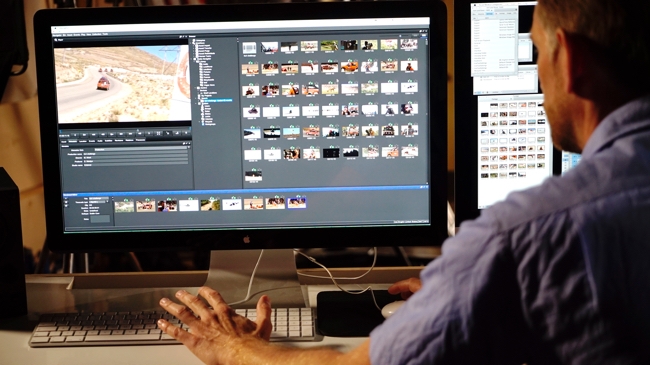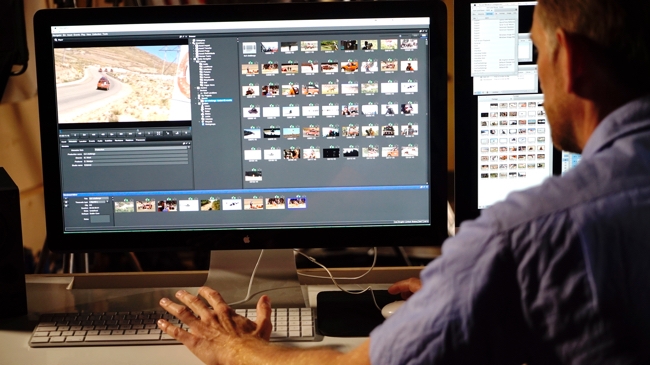
 Good Media Management with Sony ODA and Media Navigator
Good Media Management with Sony ODA and Media Navigator
Good media management and archiving are not just essentials to keep track of all your files. It will make your working life better too
One thing that characterises the age we live in is constant and rapid change. It means that seemingly without having to do anything, fundamental things in our lives disappear and reappear in a completely different form.
A striking consequence of this massive rate of change is that our media - our video, audio and metadata - is now separate from the medium used to record it. Nowadays, our means of both storing media and exchanging it is a file. Files are not intrinsically connected to the things that they’re stored on. It’s not like the days of film, records or tape. A file is a bunch of numbers, and it is the order and size of those numbers that determines the nature and content of the file - not the physical characteristics of the thing it’s recorded on.
In so many ways, the ability to copy files and store them on any type of media that is compatible is good; very good. But with such flexibility comes an increased likelihood that you can lose your content. Just as bad - you might simply not be able to find it when you need it.
That’s why media management and archiving is so important. It’s one of those things that you probably don’t think much about until you really, really need it.
1) It’s easier to do now - equipment and software is better.
Technology should make things easier, not harder. All the technology needed to make media management easy is here, now, and there are very good archiving systems, like Sony's Optical Disk Archive. There’s never been a better time to use it. Everything you need is there. Easy drag and drop operations. Transparent handling of codecs and proxies. Media management is closer than ever to the ideal, which is that it should help you to work better without getting in your way.
2) Your media is valuable. You don’t want to lose it.
This almost doesn’t bear thinking about. Your media is at least as valuable as what it cost you to create it, but quite probably worth way more than that. Imagine having to film something again. Now imagine having to do that but you can’t because it was a unique occasion. Catastrophe aside, what if you just need to get that ideal sunset clip but can’t find it because it’s on a hard disk that looks the same as all your other hard disks, and instead of “awesome red sunset” it’s called “fp3xh883hxx_”. You’re never going to find it. Media management can prevent you from ever losing it in the first place. An archive system will store it safely for you (for 50 years in the case of Sony’s Optical Disk Archive!
3) Most people store their media long term on hard disks. Don’t do it. It’s not safe.
Hard disks are great. They’re fast, and relatively cheap, with huge capacities. They’re so cheap that they’re being used like master tapes used to be. They’re pretty reliable too, especially with a RAID system. But if you, like the other 50% of media users, use lone hard disks for long-term storage, then prepare to be the victim of devastating losses. Hard drives are built for now, not for five years in the future. Out of 9 drives that we've had for at least five years, seven don’t work any more. This should not be the basis for your long-term storage strategy. Sony’s Optical Disk Archive is a long-term, robust storage medium.
4) It can make your work easier because you always have access to your stuff.
Remember when you had to get up from your desk to search for tapes or disks or even individual memory cards to find a clip you need for your current project? That's if you knew where it was. What if you have no idea where the clip is? With proper media management, like Sony’s Media Navigator, you can search with text or browse visually. And as soon as you’ve found your clip, you can drag it to your timeline without worrying about formats or codecs. That’s the dream, perhaps. But it’s here, now.
5) You may be able to work with lower resolution versions of the media by using proxies.
High resolution media means huge files. These can slow down your computer and your network. You can waste valuable time waiting for files to load, and there’s less that you can do in real time. With a proper media management system, you can work with proxy files (these are files that still look good on your timeline, but which are much, much smaller) and then re-connect with the full resolution files when you finish. You lose nothing, but you gain faster working. All of the complexity is hidden by the media management system.
6) Proper archiving devices will make your content last longer.
We’ve already seen that hard disks are not built for longevity. However well they’re made (and modern hard disks are miraculously fast and reliable) they can never be a good place to store media long term. Even the Earth’s magnetic field can gradually make the magnetically stored information degrade, and at some point it will be unreadable. Eventually, all hard drives stop working mechanically. And that is the end of your data. With Sony's Optical Disk Archive.
7) Media management enforces good working practices.
This one is simple. It doesn’t let you get into bad habits. For example, if you spend a few hours naming your files - giving them meaningful descriptions - this will save you many more hours in future because you’ll be able to find them in an instant, and just a few seconds later, they’ll be on your timeline. Compare that with having to sort your way through twenty thousand files, labeled, "file 1" - “file 20,000".
8) It isolates you from the complexity of what’s going on at a low level.
Just like your operating system protects you from the complexity of what’s going on inside your computer by presenting you with a friendly graphical interface, your media management system acts like your Media Operating System. It protects you from the complexities of formats, codecs, file resolutions and all manner of stuff that you really don’t want to have to deal with in your day-to-day editing or post production.
Sony’s Media Navigator simplifies the process of looking after your media. It keeps tracks of those thousands of files and gives you fast access to them, direct to your timeline.
9) It’s easier to share your media, both internally and externally (e.g. web, social etc)
With good media management, you can collaborate with your co-workers to a previously unheard-of level. You can compare multiple versions, and different personnel can work at the same time on the same media. When you’re done, it’s easy to export your work for distribution to the myriad of outlets that are available.
10) Proper media management works end-to-end. It becomes your workflow.
Media management isn’t just something you bolt on to your workflow. It becomes your workflow. It’s a friendly helper to make your work easier and better. It protects you from loss, and finds the content you need, almost instantly. It is a rare example of something that you will genuinely wonder how you ever managed without it.
Sony's Media Navigator and Optical Disk Archive , working together, simplify the task of looking after your media, and finding it quickly when you need it.
Work out how much your media is worth to you and the length you would go to protect it. Sony is here to help you with this. Click here for more information.
Tags: Production


Comments